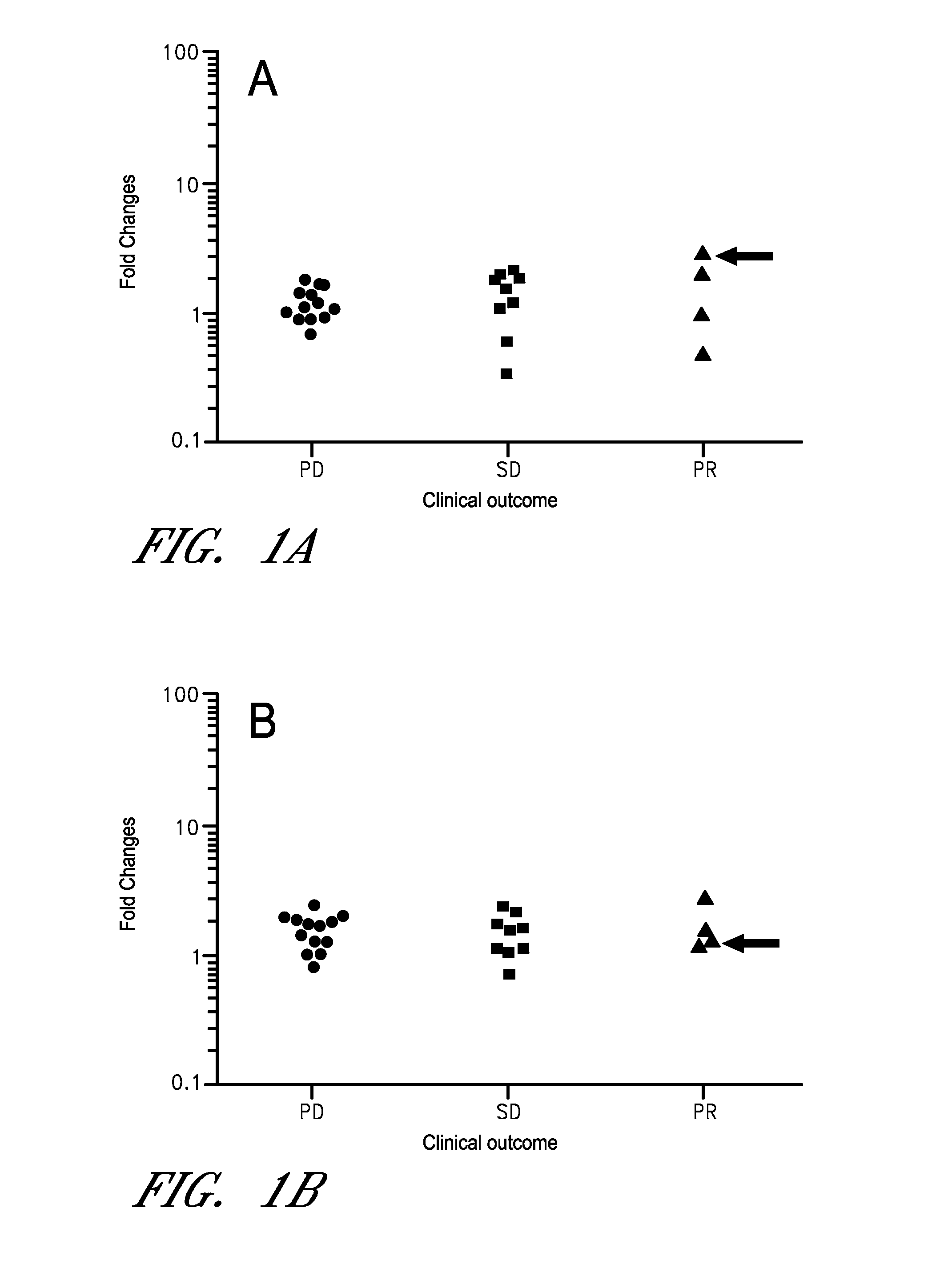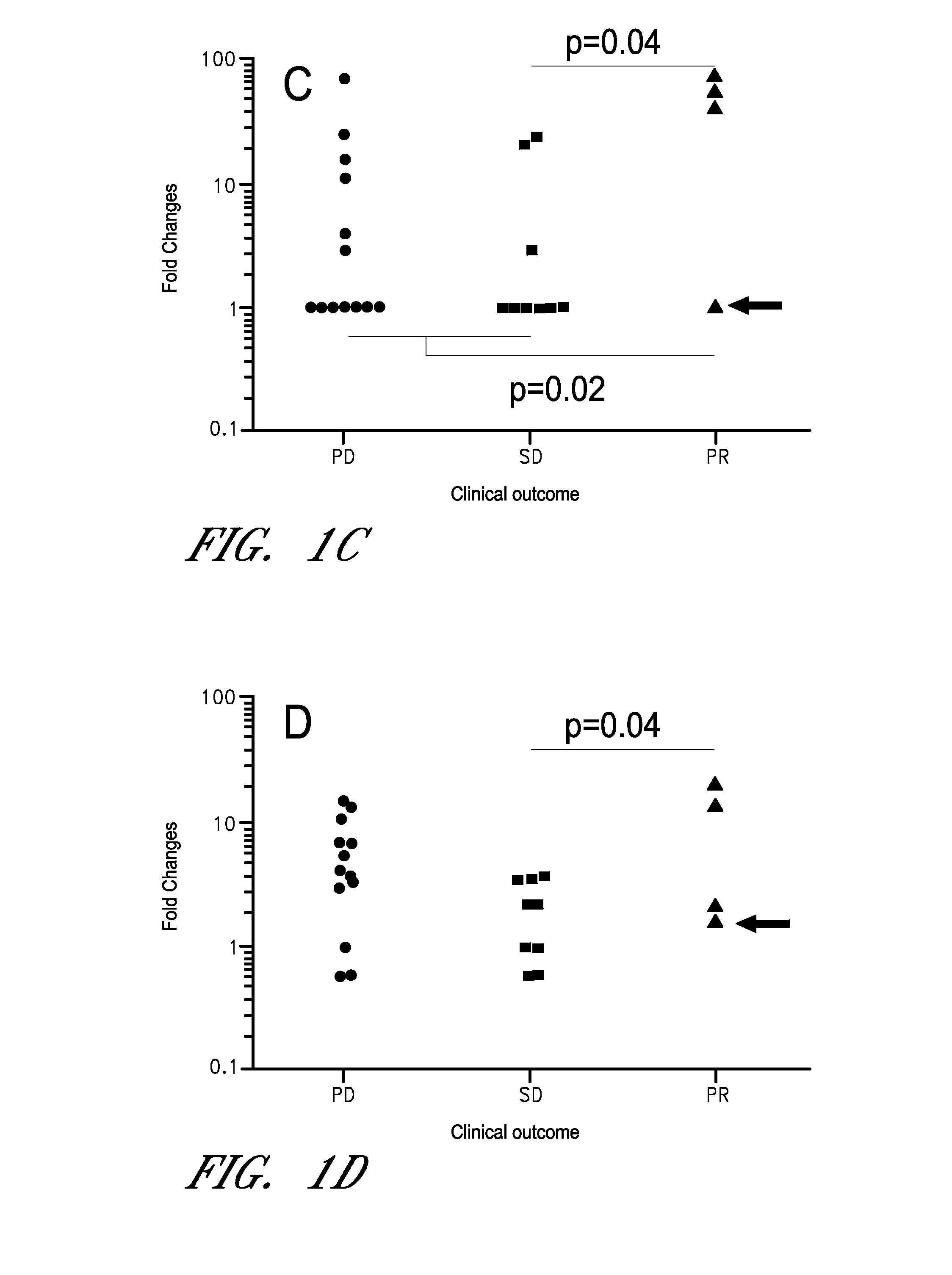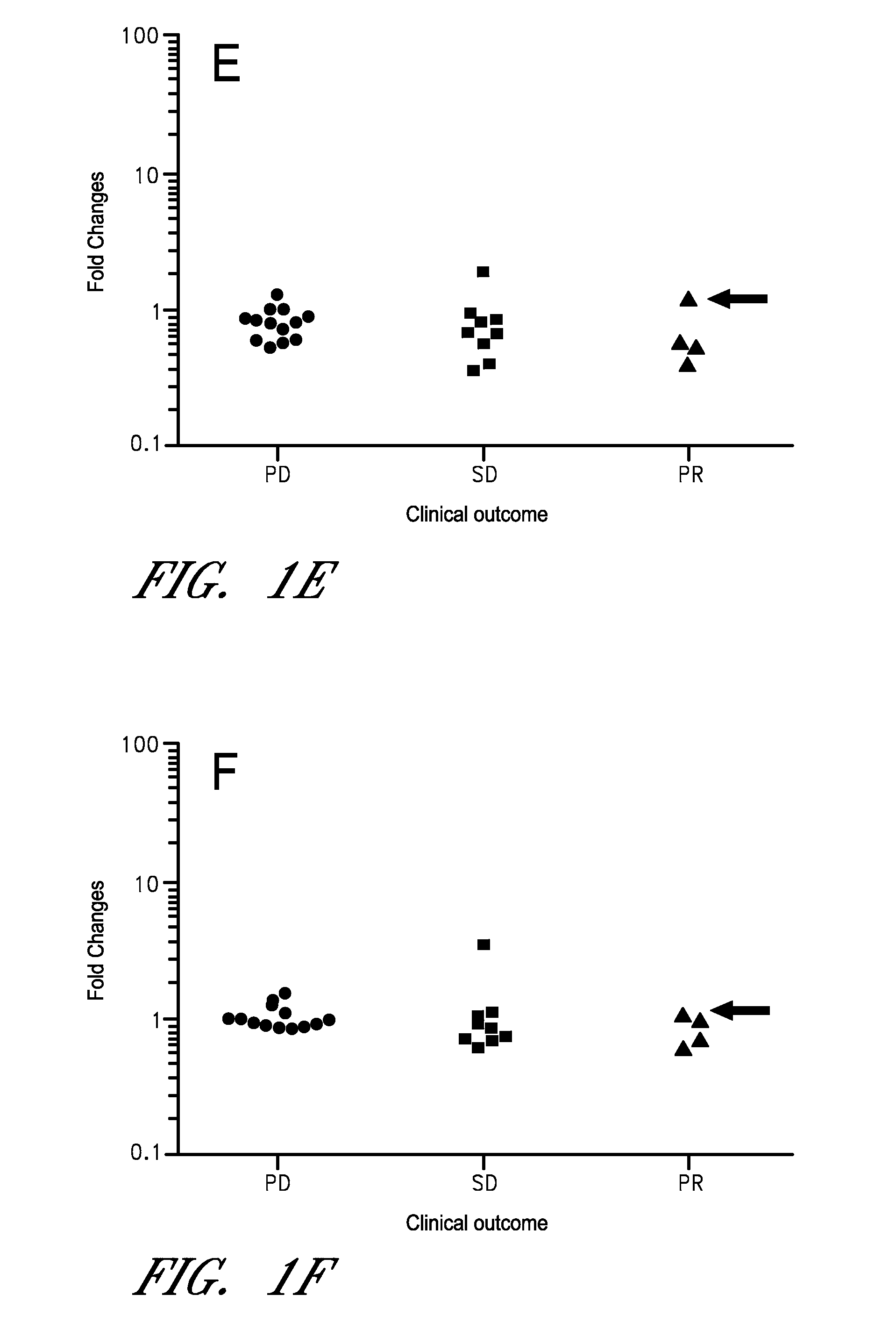METHODS OF PREDICTING HOST RESPONSIVENESS TO CANCER IMMUNOTHERAPIES BY EX VIVO INDUCTION OF LEUKOCYTE-FUNCTION-ASSOCIATED mRNAs
a technology of leukocyte function and host response, which is applied in the field of predicting host responsiveness to cancer immunotherapies by ex vivo induction of leukocyte function-associated mrnas, can solve the problems of cancer patients often facing a short window of time, the technique is not well-suited to certain patients, and the patient may be too ill to undergo surgery or chemotherapy
- Summary
- Abstract
- Description
- Claims
- Application Information
AI Technical Summary
Benefits of technology
Problems solved by technology
Method used
Image
Examples
example 1
Ex Vivo Stimulation of Leukocyte-Function Associated mRNAs
[0065]Twenty-six (26) patients having a variety of cancer types were recruited as shown in Table 1. These subjects were given dendritic cell therapy as the type of cancer immunotherapy. However, as described above, the disclosed methods are also applicable to other types of immunotherapy.
Sample Preparation and Stimulation
[0066]Before vaccine treatment (the protocol for which is described below), peripheral blood was drawn and stimulated in triplicate at 37° C. for 4 hours with phytohemagglutinin-L (PHA, general T-cell activator), heat aggregated IgG (HAG, classic model of immune complex to activate Fcγ receptors), zymosan (toll like receptor (TLR)-2 agonist as an innate immunity activator), recombinant human interleukin 2 (rIL2), recombinant human interferon a213 (rIFN), mouse monoclonal antibody against α / β chain (antigen recognition unit) of human T cell receptor (aTCR, TCR agonist), picibanil (OK432, immune activator clini...
example 2
Additional Clinical Subject and Ex Vivo Stimulation of Leukocyte-Function Associated mRNAs
[0088]As discussed above, cancer immunotherapy is expensive, and may not be efficacious in all cancer patients. Moreover, certain immunotherapies require labor-intensive preparation, adding time and additional costs. Thus, determining if a subject is likely to respond to a therapy is particularly advantageous. Using the methods disclosed herein additional subjects were tested, the subject's being advanced cancer patients (21 new subjects and total of 47 patients) with a variety of cancer types. Clinical outcomes (PD, SD, and PR) were determined by the RECIST criteria. The number of mRNA preparation / cDNA synthesis was 1,128 (8 stimulants×3 (triplicate)×47 (patients)), and the number of PCR was 18,048 (1,128 cDNAs×16 mRNAs). The fold increase (FI) was calculated using the values of PBS. The fold increase of the control genes ACTB and B2M were not different among the three clinical groups. All sub...
PUM
| Property | Measurement | Unit |
|---|---|---|
| temperature | aaaaa | aaaaa |
| temperature | aaaaa | aaaaa |
| temperature | aaaaa | aaaaa |
Abstract
Description
Claims
Application Information
 Login to View More
Login to View More - R&D
- Intellectual Property
- Life Sciences
- Materials
- Tech Scout
- Unparalleled Data Quality
- Higher Quality Content
- 60% Fewer Hallucinations
Browse by: Latest US Patents, China's latest patents, Technical Efficacy Thesaurus, Application Domain, Technology Topic, Popular Technical Reports.
© 2025 PatSnap. All rights reserved.Legal|Privacy policy|Modern Slavery Act Transparency Statement|Sitemap|About US| Contact US: help@patsnap.com



